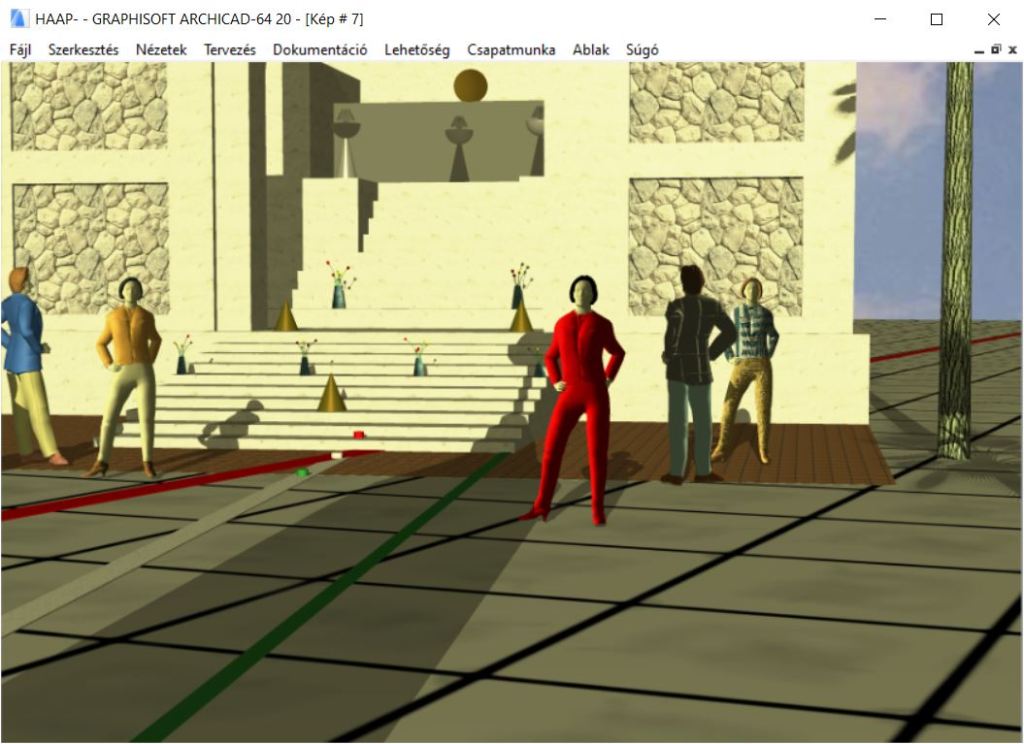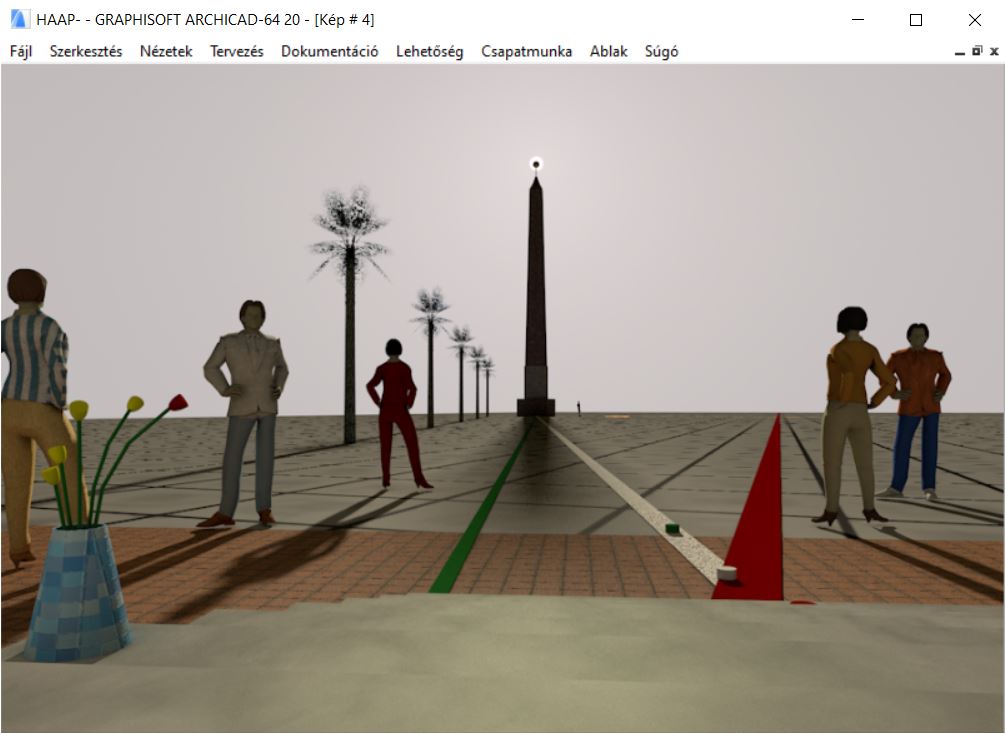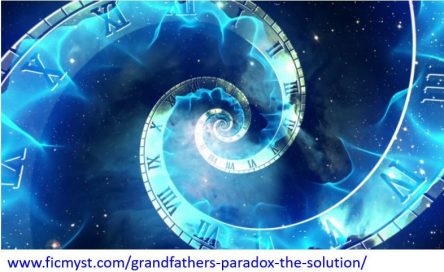
Let’s explore what the assumed sun and sunlight spectacle might have looked like on the coincided AEQ day and birthday of Emperor Augustus, 23 September 212CE and the years after!
Imagine the selected direction of the Obelisk’s shadow, pointing straight towards the centre of the western entrance to Ara Pacis. This “highlighted shadow direction” is created every day of every year but results in obelisk shadows of different lengths. For the known (accepted) topology and geometry of the obelisk and Ara Pacis, this highlighted shadow direction occurs at the azimuth angle of 251.72° of the Sun.
This shadow direction occurs at slightly different minutes and seconds when calculated for other AEQ days of other years. Still, it is unimportant precisely at what date and time it happens on a particular AEQ day. However, it is essential that on the AEQ day of any year, a very close value of solar altitude belongs to this solar azimuth. The range of the sun’s altitude is 18.9° – 19.5°. So, the length of the shadow of the 29,6m high (height of the centre of the sphere) obelisk in this direction varies only between 83.58m and 86.45m on AEQ days of the examined period.
Furthermore, both western (external and internal) upward ascending stairs of Ara Pacis virtually “break the shadow” cast on them. The shadow appears shorter than it would on a horizontal surface. The stairs “compensate by length compression” the length-changings of the shadow on the different AEQ days!
In my opinion, these simple astronomical rules were also recognised by ancient astronomers and applied to the design of the HAAP complex.
Knowing these data, both the static and dynamic “behaviour” of the shadow can be modelled with considerable accuracy for any given year, using the astronomical data of any other year. The slight difference between the shadow lengths of the model year and those of an old year could be corrected using Stellarium data.
However, as we show soon, we don’t need a numerically accurate model for a qualitative analysis of the spectacle. (Especially because the accepted topological and geometrical data might also be somewhat uncertain.)
The ArchiCADTM 3D model:
I have examined the 3D shadow modelling accuracy of ArchiCADTM. ArchiCAD is a Hungarian architectural design and modelling software application of Graphisoft SE. In architecture, no exactness in an astronomical sense is expected for shadows. ArchiCAD allows the qualitative visual shadow analysis of old astronomical AEQ phenomena by using data from today’s AEQ. ArchiCAD calculates with atmospheric refraction and optical atmospheric diffraction of sunlight by the built-in MAXON CineRender, and these are important for qualitative light-shadow analysis.
Based on topological and geometrical data from recent research (Prof. Bernard Frischer et al.), I built an accurate ArchiCAD 3D model of the Horologium Augusti and Ara Pacis building complex at M = 1:1.

left the red EQL, It is cast on the southern part of the external steps of Ara Pacis.
Let us first look at the movement of the shadow cast by the obelisk from morning to evening on the AEQ day, 23 September 2022. The length of the draft shadow of the obelisk is about the average size calculated astronomically. The clips show that the shadow of the gilded sphere moves along the red EQL and goes from about the middle of the external lowest stair to the south sidewall of the western entrance of Ara Pacis.
I examined the maximal shadow length which might penetrate the inside stairs of Ara Pacis, too. The southern edge of the western entrance (portal corner) is the worst-case regarding entering the shadow to the inside of Ara Pacis.
The following draft picture shows the longest possible shadow of the obelisk to this southern edge of the western entrance on any AEQ day.

of the examined periods.
Exact calculation of the shadow, cast by point like Sun. Draft “Home rendering”.
Portal-corner Sun azimuth 252,7°; lowest Sun altitude 17,9°.
Conclusions of the analysis of the 3D model:
I have analysed (not given details here) the light-shadow relationships of the Horologium Augusti and Ara Pacis complex and made the following observations.
– Even the longest shadow could never (neither in 9BC nor in the two millennia since) be cast on the west sidewall of the altar table on the AEQ day and on the day after the AEQ day (despite changes in the shadow length).
– Let’s look at the obelisk’s shadow to the “highlighted direction” modelled with the quasi-longest shadow of 23 September, AD2022. This picture represents the shadow length. It is rendered by MAXXON with the Sun as a point-like lights source. The MAXXON algorithm gives a somewhat longer shadow than the worst-case calculation based on Stellarium.

MAXXON calculates with somewhat longer shadows than the astronomical worst case.
– A visible shadow of the sphere did not even reach the outside steps on the day of the AEQ. This is because the sphere’s shadow became practically “dead” at this distance! The solar disk encircled the gilded sphere, and its shadow became a completely “lifeless” dimmed, almost invisible penumbra. Standing in front of Ara Pacis in the shadow of the sphere, it was hard to realize the shading effect of the shadow, the own shadow of the observer remained virtually unchanged. Because the differences in the shadow length are minor and because of the unsharp penumbra, the results of the 3D model can be considered qualitatively correct. Look at the photorealistic, scattered penumbra of the obelisk and the sphere in the next photo. The photorealistic picture was taken in very bright sunlight to highlight the shadow. The sphere’s slow-moving shadow virtually could not be seen at all.

Photorealistic penumbral shadow. The Shadow of the gilt sphere disappears.
I am convinced that ancient astronomers knew these attributes of shadows, too.
That is why I guess that the relative position of the two buildings and the sphere were deliberately sized so that the sphere’s shadow would “fade and disappear” on astronomical AEQ days when it would have reached the western outer stairs of Ara Pacis.
– Furthermore, the gilded sphere did only partly obscure the Sun. This covering caused an “artificial annular (ring-shaped) solar eclipse” to such an extent that it at least helped to look towards the Sun. The artificial annular solar eclipse generates an umbra (dark shaded core part), a penumbra (partially shaded part on the sides of the umbra) and an antumbra, a lighter shaded part of the shadow beyond the core umbral part. An antumbra seems to be a light spot compared to the umbra. This quasi light spot symbolised the virtual entry of the Sun into the Ara Pacis. To an observer (sitting on the external steps of Ara Pacis or standing in front of the steps) looking alternately towards the Sun and Ara Pacis, it seemed that the “Sun itself was entering the sanctuary of Ara Pacis “!
This novel “Sun Spectacle” feature of Horologium Augusti - Ara Pacis is a virtual “Symbolical Sun Entry Birthday Function” to honour Emperor Augustus.
The obelisk’s long umbral shadow functioned as a bidirectional pointer to show where the observers should look to.
Let’s see the marvellous artificial annular solar eclipse in a backlit photo via a somewhat darkened glass.

– The day before the AEQ day, the shadow of the obelisk body was still too short; however, two days after the AEQ day, it was already disturbingly long. In fact, from the 2nd day after the day of AEQ, the tip of the pyramidion’s shadow extended to the vestibule in front of the inner altar steps more and more visibly. Therefore, the above “Sun Spectacle” only worked properly on the day of AEQ and the day after. The two-day celebration of the birthday of Emperor Augustus, the biduum, thus constituted a kind of borderline date-pair (in AD212 and after) for the observability of this “Sun Entry Phenomenon”, the “Symbolical Sun Entry Birthday Function “.
To sum up: Buchner was right so far that the two beautiful buildings “cooperated” on the birthday of Emperor Augustus. However, from 212CE, on the two days of the birthday celebrations of Emperor Augustus, not the shadow of the obelisk but symbolically “The Sun as Symbol of Augustus Entered” the inner sanctum of the Ara Pacis.
- Let us see another novel and beautiful “Sun function” of Ara Pacis:
Let us examine what happened after the obelisk’s shadow left Ara Pacis.
While the shadow of the obelisk passed in front of the Ara Pacis, the shadow of the wall above the western portal (straight arch) fell on the front wall of the altar table. Because of the shading effect of the straight arch, the late afternoon sunshine could reach the altar table only when its rays approached the horizontal, that is, at sunset.

The Sun Symbol placed on the Altair Table is illuminated by the last rays before darkness.
As the day of the AEQ approached, the sunset shadow of the north side wall of the western entrance was cast less and less on the altar as sunset occurred further south. So, the sunshine could be projected undisturbed to the middle of the altar table. From the day of the AEQ, full sunlight flooded the centre of the altar every sunset. A solar symbol (like another gilded sphere) placed on the middle of the altar table would glow with beautiful light at sunset. This “sunset phenomenon” continued through winter until the next Vernal Equinox (VEQ).
The Ara Pacis was the "symbolical guardian" of the entered Sun from the day of Autumnal Equinox, from the birthday of Emperor Augustus until the next Vernal Equinox.
I guess the priests of Emperor Augustus lit some candles inside Ara Pacis after sunset to maintain the brilliance of the gilded sphere placed on the altar table during the night, too.
These phenomena were only significant for Emperor Augustus if they were observable on his birthday, i.e. if his birthday fell on the day of the AEQ. All these light phenomena on the astronomical AEQ day strengthen my hypothesis that the Horologium Augusti and Ara Pacis complex was designed not only for the AEQ day but also for the coinciding birthday of Emperor Augustus. The coincidence indicates that Emperor Augustus lived 220 years later than currently accepted.
